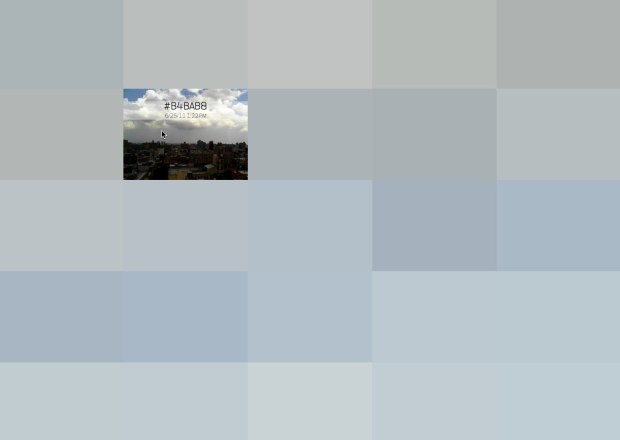The color of the sky changes through the day and into the night and there are subtle differences every day with clouds, pollution, etc. Mike Bodge use this idea in N SKY C, a project with a simple concept. Take a picture with a webcam of the New York City sky every five minutes, take the average color, and post it to the site. N SKY C is the result. Roll over grids to see the picture that was taken.
I think someone did this a while back, but the project and artist names escape me. He or she used a smaller grid so that you could see more at once. I think I’d like that format better for this project, too, but still kinda fun.
There’s a cyan-colored section around the middle. Either the webcam was having color adjustment issues or NYC went into dreamscape mode. Not sure which.
[N SKY C | Thanks, Doug]



Very interesting. I agree that it would be nice to see all of the pics at once vs. having to mouse over – would be more instantaneously visually revealing. Thanks for sharing!
Yeah this is very cool! It reminds me of a project I did in school: http://www.brynnshepherd.com/thesis/sundaynight/mondaymorning/
I’d love to be able to enter a zip code and see the same visualization for any city.
Cool idea.
As the focus is the sky, I’d suggest the color overlay shouldn’t cover the sky.
Very nice! I like the simple/clean looking implementation.
Perhaps the project you’re referring to is The History of the Sky?
http://murphlab.com/hsky/
I have a similar project recently completed, where a light fixture is dynamically driven by the color of the sky above Ottawa, Canada:
http://gallery.thecreatorsproject.com/gallery/Sky-Spectrum/1027903
Cheers,
ao.
Interesting work and comments. I explored a similar idea lately. Slit-scanning and animating the sky of 7 different parts of the globe, from the North to the South Pole over a one year period. Each frame covers 24 hours : midnight to midnight, from top to bottom. The images are animated at 10 frames per second, so a year loop equals 36.5 second. It allows to see various phenomena: sunrise and sunset at different latitudes, the full moon illuminating the sky every 28 days (2.8 sec) where light pollution is low, etc.
http://youtu.be/zVsWcNDi-M0